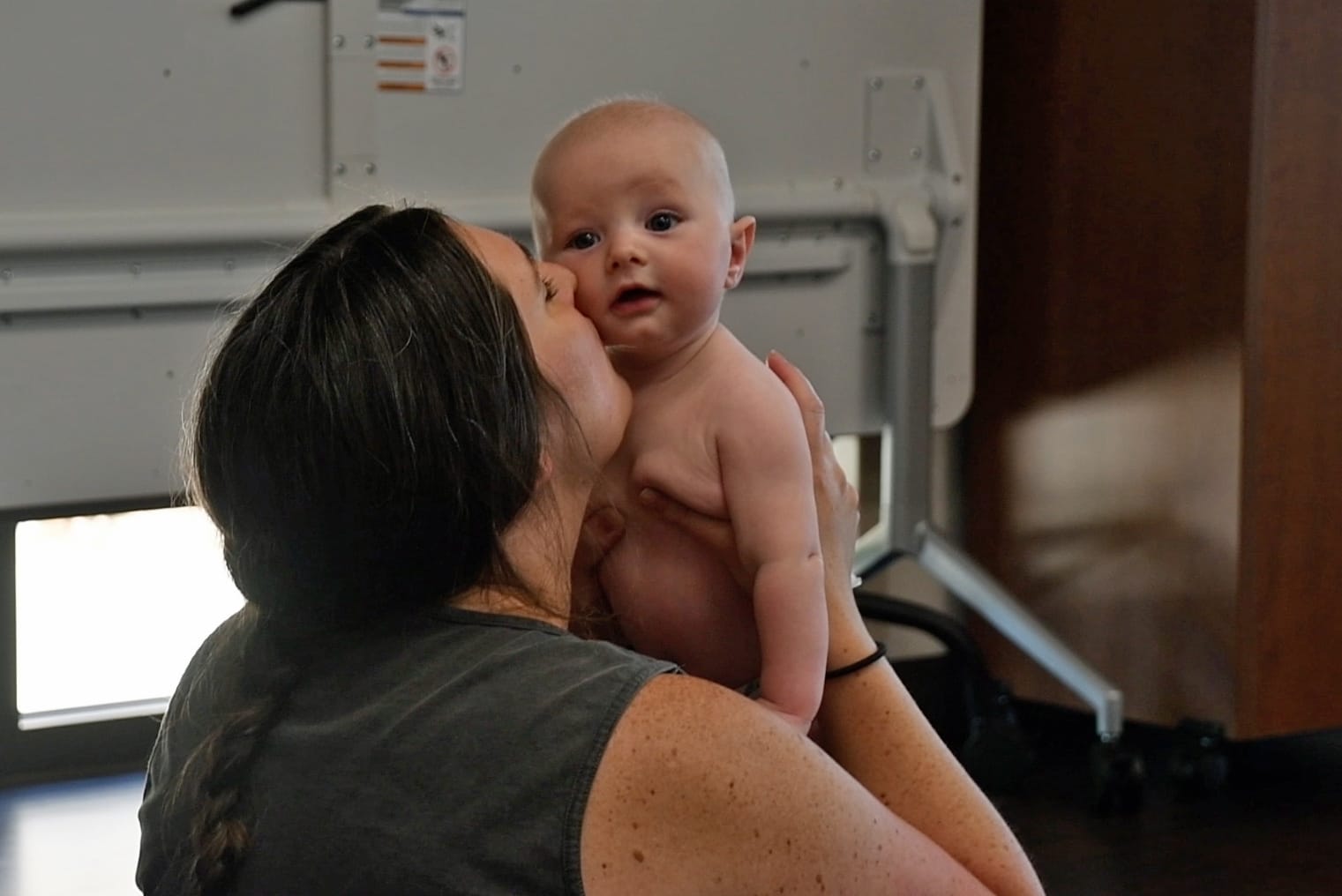Editor’s note: This is the first in a series of stories on children that Jackie Hendry, producer and host of South Dakota Public Broadcasting’s South Dakota Focus, will write for South Dakota News Watch. Each month, she will preview the show that will air the following week.
Nature can be hard on moms. It doesn’t always cooperate with those who’ve dreamed of a natural birth.
Nearly 25% of all births in South Dakota happen by cesarean section, according to 2021 data from the Centers for Disease Control and Prevention. That’s among the lowest rates in the nation, yet it represents a significant surgery undergone by a fourth of South Dakota moms.
Cesarean sections involve a surgical incision through the abdomen and uterus to remove the baby. For some mothers, the procedure is simply an alternate path to meet their new child. For others, the procedure is a disappointing deviation from their expectations for delivery, or even traumatizing.
In most cases in South Dakota, C-sections happen for a variety of medically necessary reasons.

'We talk about the power, the passenger and the pelvis'
Dr. Kimberlee McKay, an OB-GYN with Avera Medical Group in Sioux Falls, said C-sections generally happen because the baby is in distress, in the wrong position or won’t fit through the birth canal.
First-time C-sections account for 12%-15% of births in the Avera health system, she said.
“We talk about the power and the passenger and the pelvis in labor,” McKay said. Power represents the frequency of contractions and if they’re strong enough to dilate the cervix. The passenger, of course, represents the baby.
“The baby tolerates labor based on the health of the pregnancy,” she said. “That’s when moms have higher medical issues like high blood pressure, like diabetes, like smoking. Social determinants of health like food insecurity. Those kinds of things where the pregnancy isn’t as healthy, they’re going to be at higher risk for C-section.”
In fact, McKay said South Dakota’s rate of C-section births is quite low considering the rates of those maternal health issues.
Finally, the pelvis represents the physical positioning or size of the baby relative to the birth canal.
“I mean, babies are little to us, but sometimes, they’re big for the pelvis,” said McKay. Any of these elements can change over the course of a labor. “It’s always a disappointment when you try for a really long time to have a vaginal delivery and you get a C-section.”
Group helps women deal with shock of cesarean section
McKay said addressing the needs of both mother and baby can be a balancing act, but performing a C-section is not a decision she makes lightly.
“As it turns out, sometimes the longer you wait for a C-section, the risks of admission to the NICU (neonatal intensive care unit), risk of lack of oxygen, those kinds of things go up.”
In emergency situations, there may not be much time for doctors to discuss options with patients before reaching a decision.
“Nature works very hard against moms and babies,” said McKay. “Our job is to let things happen until nature starts trying to mess things up. Then we need to step in.”
She also recognizes the pressure parents often put on themselves, starting with their child’s very first moments.
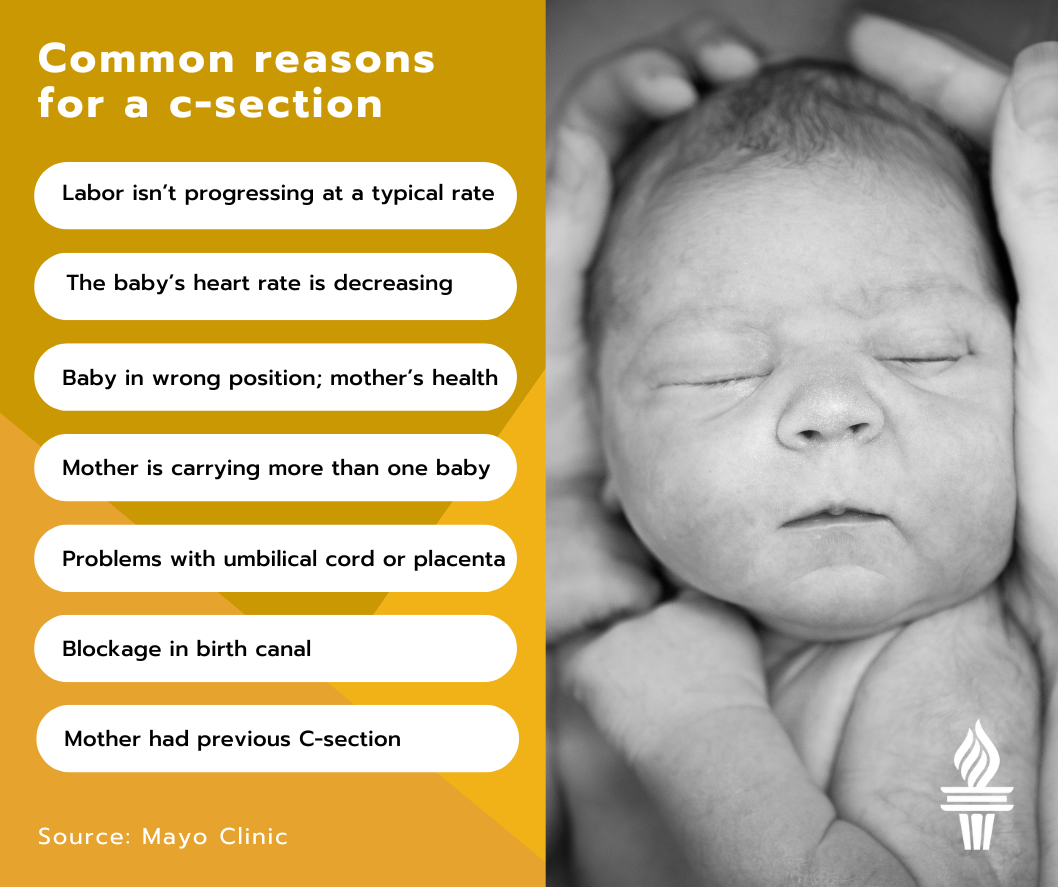
“Your birth story is still your story,” McKay tells patients. “So if there’s been trauma from it, bad memories from it, it is really important that we get you to a space where you can talk through those things and process them.”
One group of mothers in Sioux Falls has created that space for themselves.
The state’s only chapter of ICAN — the International Cesarean Awareness Network — is a small group of mothers who meet monthly at the Asbury United Methodist Church. Sometimes they hear from guest speakers, and other times they gather socially to support each other in parenting and recovery from their C-sections.
The production team of South Dakota Focus visited a recent meeting for an upcoming program on maternal health care access. The stories these women shared illustrate the importance of a network of other people with similar experiences. They also demonstrate the challenges — both physical and emotional — of bringing a child into the world.
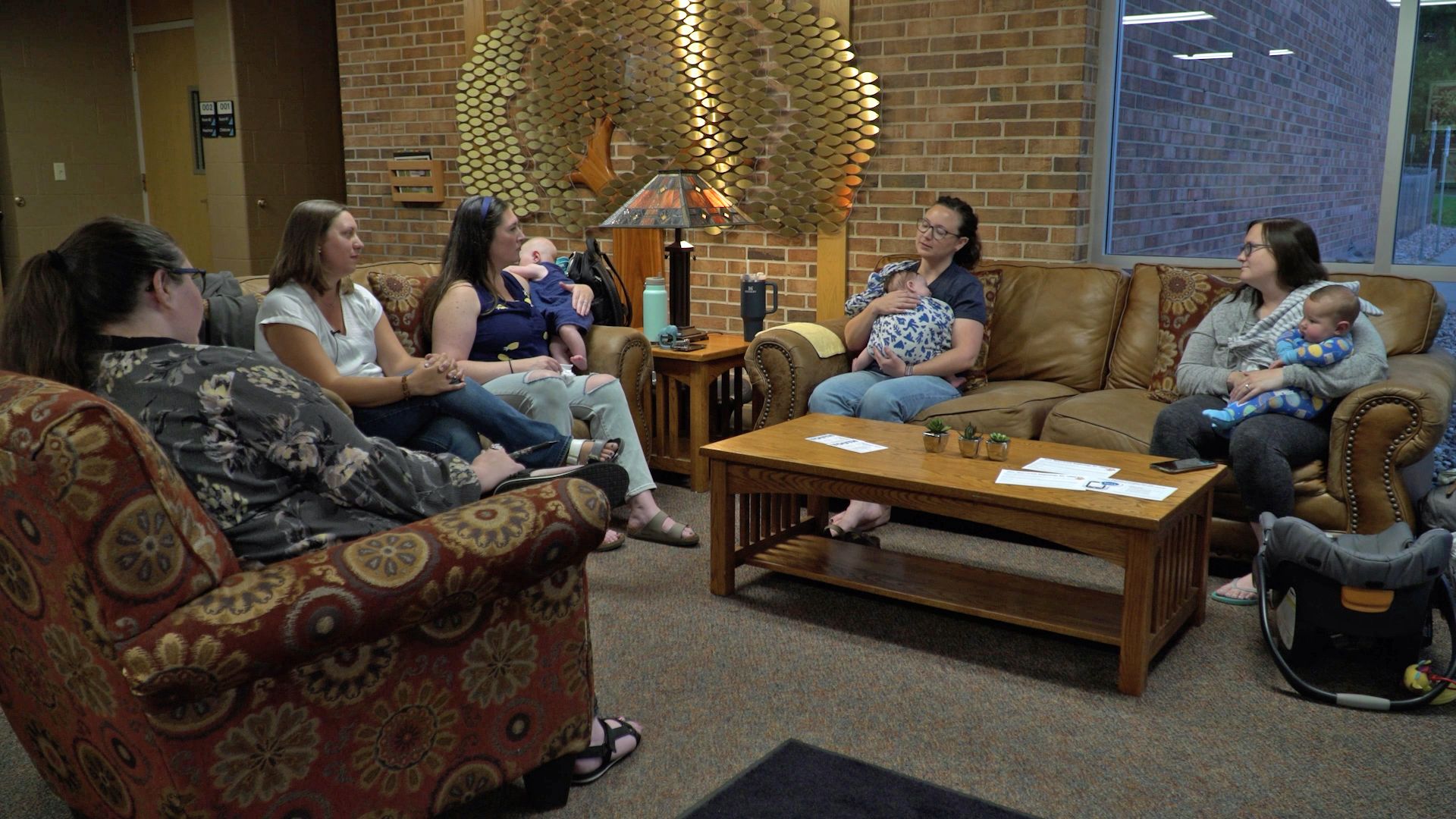
'I love my firstborn. I don’t love my birth experience.'
Valerie Hummel LaBounty founded the Sioux Falls chapter of ICAN. She had a C-section for her firstborn daughter about two years ago.
“I started ICAN because I was looking for support from people who have experienced similar things that I did in birth,” she said.
Hummel LaBounty learned her firstborn was breech at her 40-week prenatal appointment, basically the end of her pregnancy. Her doctor scheduled a C-section for the next day.
“I know I’m fortunate that I had time to think and to process, but I didn’t sleep that night,” said Hummel LaBounty. “I was mad and sad and frustrated and screaming at this baby inside of me because I was just so mad. Like, ‘Why is this happening to me!’ Going into the cesarean, it was hard to be excited about meeting my baby because it meant a surgery I didn’t want.”
Hummel LaBounty struggled with delivery and the recovery process. “I love my firstborn. I don’t love my birth experience, so it’s hard to carry that with me.”
Some of her frustration stems from the strain she sees on the health system, even a service hub like Sioux Falls.
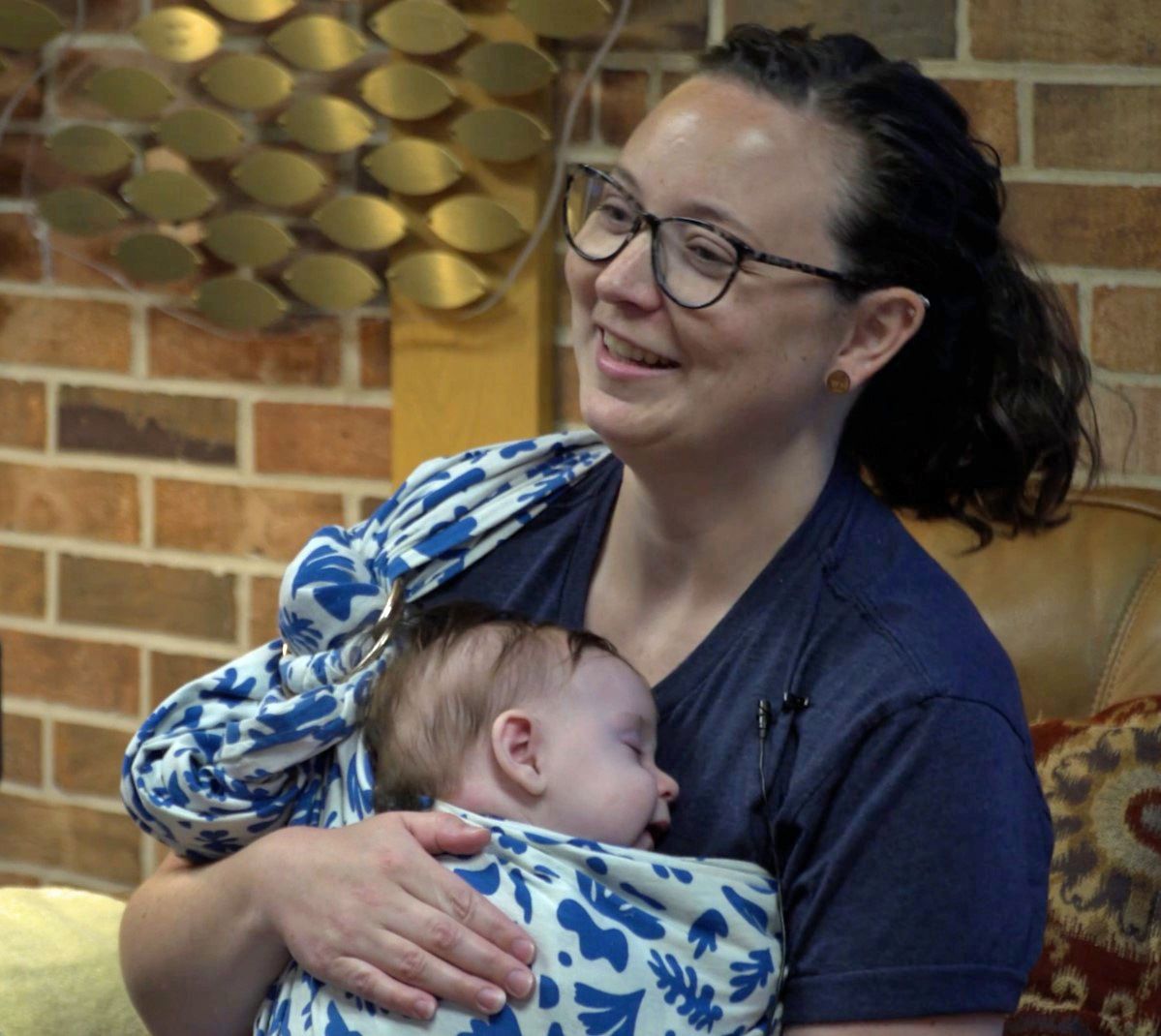
“I was seeing an OB (obstetrician), and she was so busy. I think that’s part of why this breech was missed,” Hummel LaBounty said. “I think our OBs are so busy they can’t spend time with their patients as much as they may want to.”
For her second child, Hummel LaBounty worked with a midwife.
“They were more holistic in their care of both of us,” she said, just as her 5-month-old coos in her arms.
Her second child was a VBAC, or a vaginal birth after C-section. VBACs are risky for some pregnancies, and some providers refuse them in favor of subsequent C-sections. The American College of Obstetricians and Gynecologists guidelines say VBACs can be appropriate in many cases but should happen in facilities with emergency care available.
'Are you sure you want to do this?'
Melissa Reno has three children — all delivered by C-section in other states. She’s the only one in attendance at this ICAN meeting whose children are more than a few months old.
“The first one ended up being considered an emergency C-section,” Reno said. “They just came in and said, ‘We’re taking you back in 20 minutes for cesarean, I’ll meet you in the OR.’
"There was no discussion,” Reno said. “The last thing I remember is the nurse saying to the provider, ‘Are you sure you want to do this?’ And I felt pressure, and I was out.”
Reno had a bad reaction to the general anesthesia used for the surgery. She woke up eight hours later, alone, with no memory of giving birth. The medical team had forgotten her husband in another part of the hospital when another emergency case arrived.
Reno tells the story through tears.
“My oldest is 16, and those feelings are still there. And they probably will always be there,” she said.
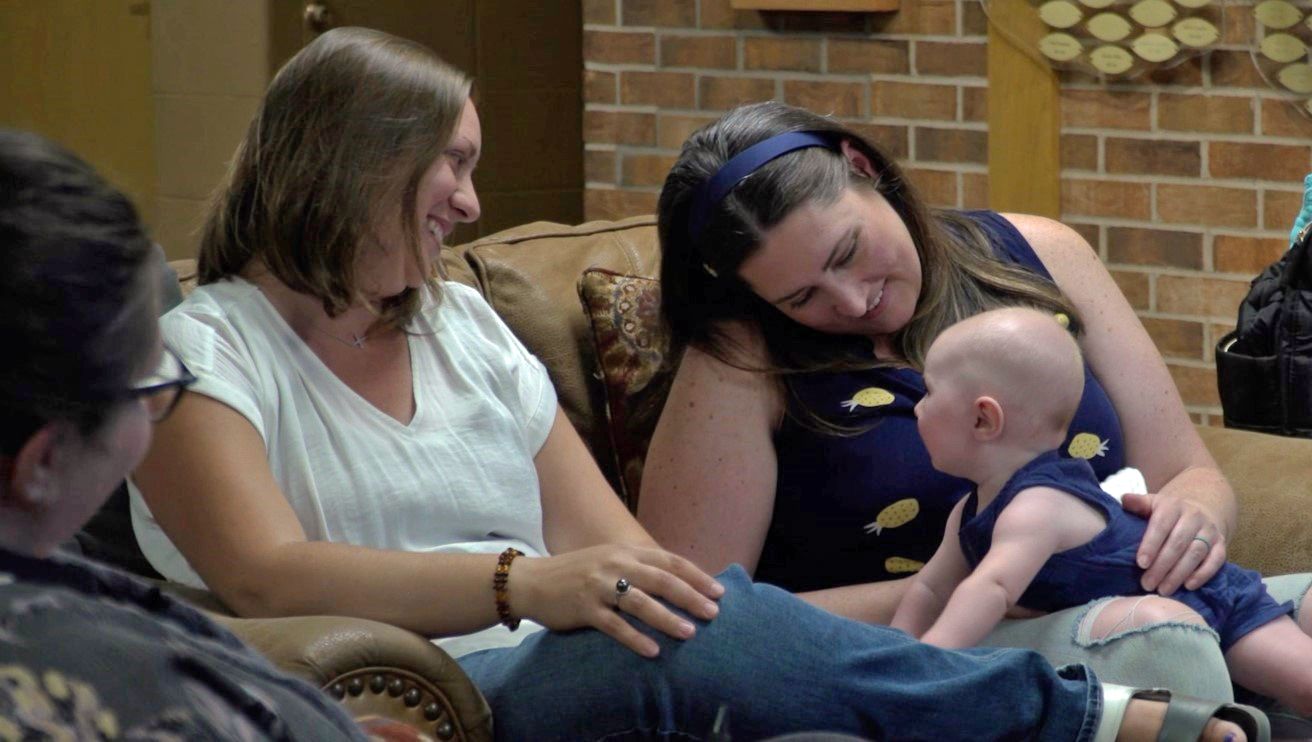
A few years ago, Reno learned about epidurals during training at the Sioux Falls chiropractic office where she worked as a chiropractic assistant. It opened her eyes to risk factors she’d never known about. Reno said that training lit a fire for her to change careers and become a birth and postpartum doula.
Doulas work closely with families to provide information and support before, during and after birth. They provide emotional support during labor and often advocate for a patient’s wishes.
“So even if things change in the birth and it takes a little bit of a detour from what the ideal birth situation would be, we walk away knowing that we have choices and we had options and we had true, informed consent,” Reno explained. “This journey of being a birth and postpartum doula and helping families … it’s helped me heal.”
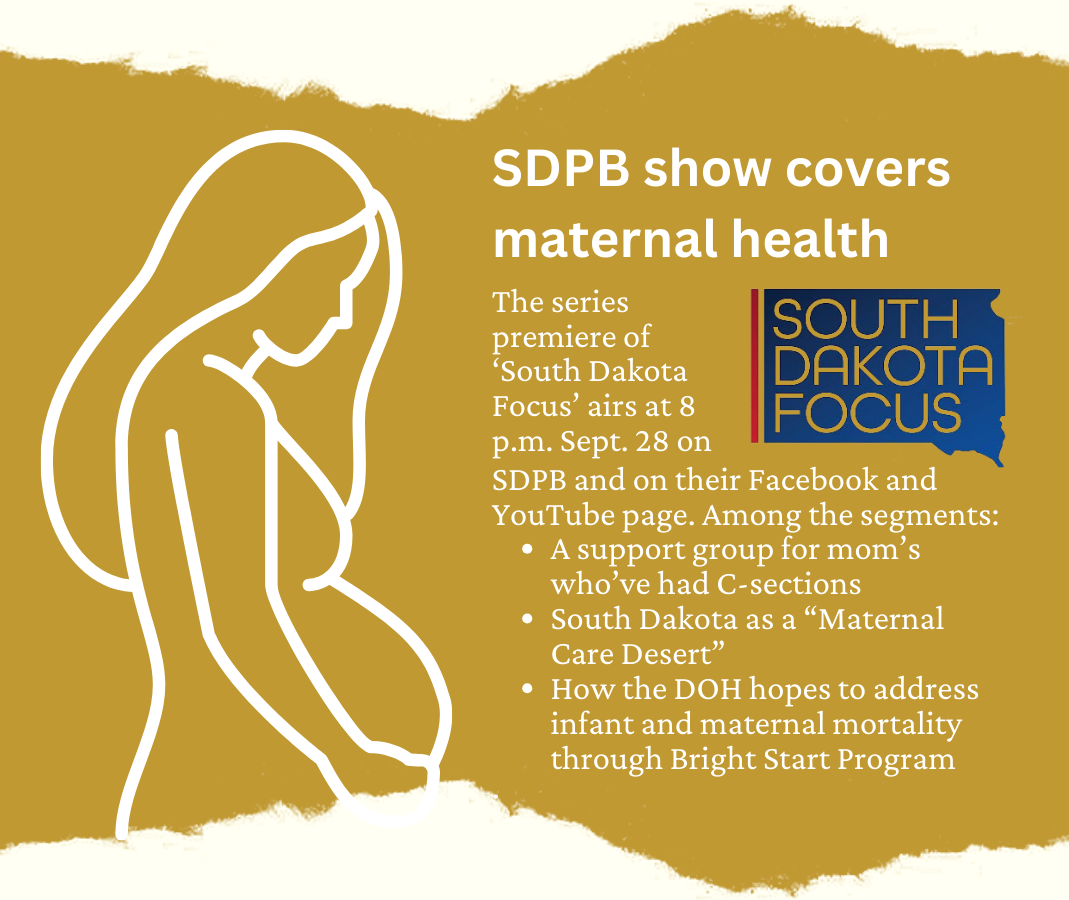
'Totally not as planned'
Kate Hoekstra is quick to downplay her C-section experience.
“My story’s not as traumatic as some,” she hedged while bouncing her 5-month-old baby boy on her hip.
“He’s our IVF miracle,” she said smiling, referring to in vitro fertilization. Hoekstra shared the journey to her C-section: five years and nine lost pregnancies — including two ectopic pregnancies that claimed both of her fallopian tubes.
“To say I was an anxious pregnant mom is to say the least,” Hoekstra said. Her doctors recommended inducing labor at 39 weeks. “I was totally fine with that because I was excited to meet him.”
Hoekstra’s body didn’t respond to the induction meds, and after 45 hours of labor, the medical team decided on a C-section.
“I was just nervous about his well-being,” she said, gesturing to her son. “I knew I’d be fine. You know, I just remember thinking this was just on par with how everything else was going. Totally not as planned.”
Hoekstra participated in some pregnancy loss support groups on social media, but in-person fellowship is different. She connected with members of ICAN during a New Baby and Me class offered through Sanford Health.
“It’s been nice to have a support system here. You can just talk about real life.”
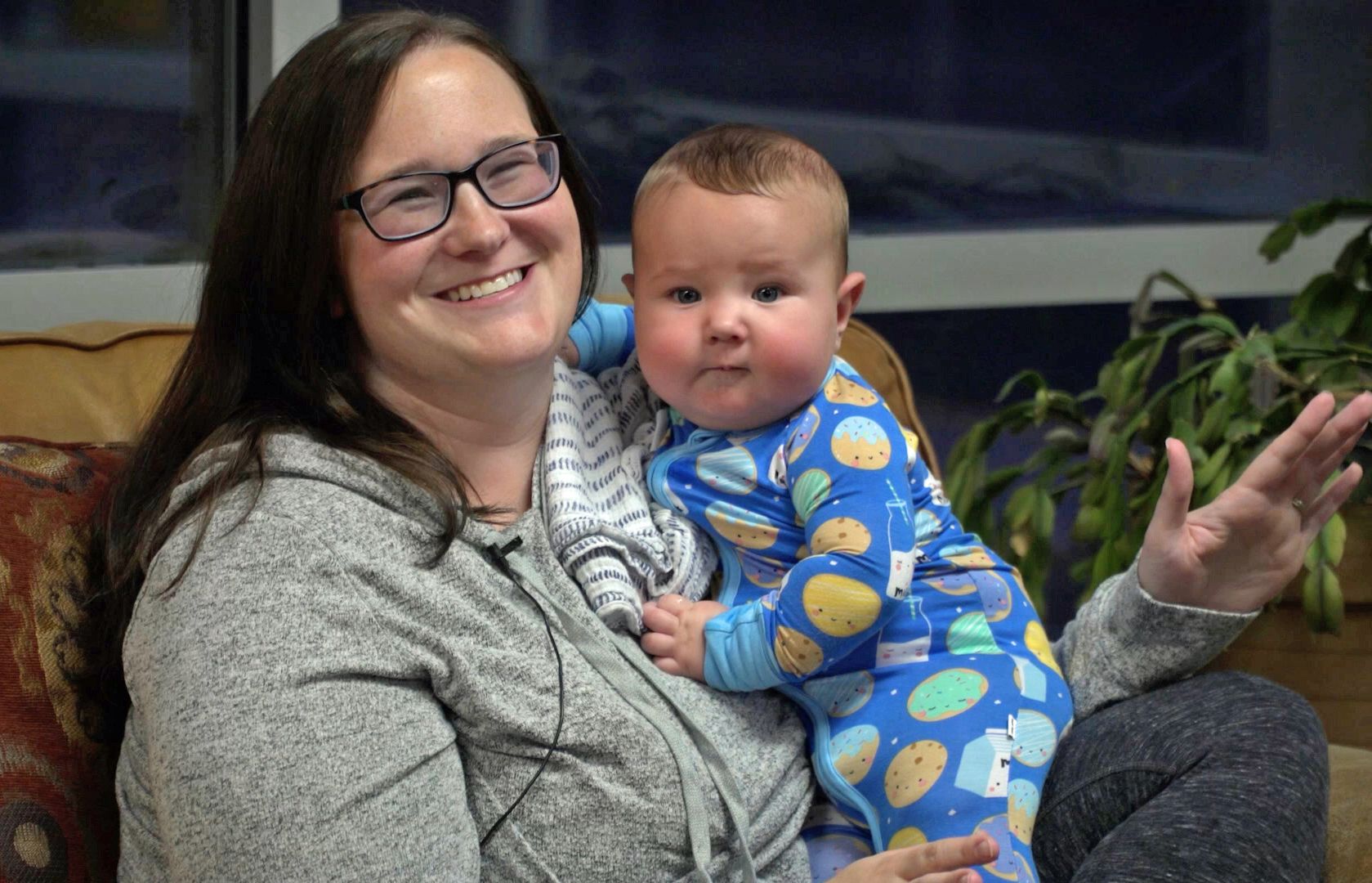
'Yep, that’s a nose!'
Carlye Johnson has known Valerie Hummel LaBounty since middle school.
“I was the one, like, on Amazon the night before her C-section, getting stuff shipped to her house so that she had some of the recovery supplies,” Johnson said.
Her firstborn came into the world as expected, so when she learned factors in her second pregnancy put her at risk for a C-section, she knew who to call.
“I was like, ‘Valerie, will you have lunch with me?’” She said that gave her an opportunity to ask questions and prepare for the possibility of an emergency C-section.
When Johnson was in labor with her second child, the head nurse felt something unusual. “She’s like, ‘I’m gonna go get the OB on call. So then the OB on call came back, and she did a check and said, ‘Yep, that’s a nose!’ So, this little guy was trying to come out nose-first.”
While Johnson had emotionally prepared herself for a C-section birth, the lived reality is different.
“I would say there is a little bit of a disconnect. Like, when you have a baby vaginally, they take the baby, they put it straight on your chest. When the baby comes earth-side in a C-section, it’s just different, and it’s harder to process and that connection is not as immediate. I’m so happy he’s here and safe, but I think having resources after birth is really important.”
That’s why Johnson is especially grateful for Hummel LaBounty and the other members of ICAN. She said support from other moms helped her recover from the surgery.
“My discharge for my C-section — I didn’t really get any information beyond what I could have read in my discharge papers. But there are a lot of additional things that I found from women that I knew had C-sections.”
For her part, Hummel LaBounty is grateful to have found a space to share experiences and process together.
“I’m not glad that we’ve all had C-sections, but I’m glad that we have this space to talk about it,” she said to the other women, who all nod. “You’ve experienced something I’ve experienced. Even if it was different, and it looked different getting to that point. We’ve all had an unwanted surgery, and we can relate to each other.”
The season premiere of South Dakota Focus offers an overview of maternal health access in the state. The episode airs Thursday, Sept. 28, at 8 p.m. Central and 7 p.m. Mountain on SDPB-TV 1, SDPB Facebook Live and SDPB YouTube.

